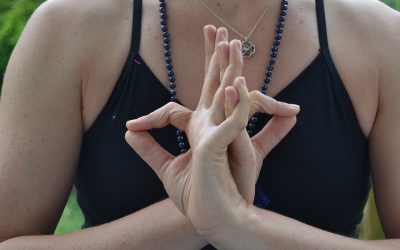Nowadays, we can practice Yoga at home, gyms, schools and even in colleges. Practicing yoga in regular basis support your health and keep you mentally and physically strong. Here we pick 10 essential basic yoga poses along with yoga rules for beginners, which you can easily do at your home without any trainer or assistance.
Person with any age can easily perform such poses step by step at your home or during the training session. So, here you find several yoga asanas with picture and names similar like a Yoga manual, this are also common yoga poses in Sanskrit.
You can also consider it as beginners yoga poses for weight loss. This can also be considered as the basic yoga poses for beginners. Let’s start this yoga journal with yoga information for the beginners;
10 Yoga Poses for Beginners at Home.
- Tadasana.
- Makarasana.
- Padmasana.
- Shavasana.
- Siddhasana.
- Sukhasana.
- Supta Padangustha asana.
- Virabhadrasana II.
- Balasana.
- Chakravakasana.
Tadasana Yoga for Beginners at Home.
“Tadasana” is also known as “Mountain Pose”. It is an everlasting posture in modern yoga as an exercise. However, it is not described in medieval hatha yoga texts. Tadasana is generally the preliminary position for all standing poses.

Steps of Tadasana Yoga for Beginners at Home.
Step 1.
Stand with your toes and keep them parallel. Lift and spread your toes, then lie them gently on the surface. Make a standstill posture, so that your weight is evenly balanced on the feet.
Step 2.
Strengthen your thigh muscles and lift the knee cap. Extend your tailbone towards the floor and lift the pubis towards the navel.
Step 3.
Push your shoulder blades into your back. Thereafter, widen them and drop them under your back. Hang your arms next to the upper body.
Step 4.
Balance your head directly over the center of your pelvis and make a parallel with your chin.
Step 5.
Simply breathe and stay in this posture for 30 seconds to 1 minute.
Contraindications or Limitations of Tadasana Yoga.
- Person those are suffering from Headache, low blood pressure and insomnia should avoid this exercise.
Benefits Tadasana Yoga.
- Develops body posture.(1)
- Improve abdomen and buttocks.
- Relieves back pain.
- Supports thighs, ankles and knee caps.
- Moderates flat feet.
- This is one of the effective Yoga Poses for beginners and can perform at home.
Repetitions.
- Recommended 2-3 repetitions.
Makarasana Yoga for Beginners at Home.
“Makara” is a Sanskrit word which mean “Crocodile”. Therefore, Makarasana also known as Crocodile Pose. It’s an extremely healing position and it is a part of the “Padma Sadhana”.

Steps of Makarasana Yoga for Beginners at Home.
Step 1.
At first lie on the support of your stomach. By bending your right leg make a 45 degree angle with the help of your thigh and calf.
Step 2.
Thereafter, allow left leg to lie conventional or straight behind you.
Step 3.
Place left cheek on your mat and look right.
Step 4.
Then, Place your hands under your left cheek by making a pillow.
Step 5.
Finally, rest in this posture for 10 minutes and take a deep breath.
Contraindications or Limitations of Makarasana Yoga.
- Women must avoid during Pregnancy.
Benefits of Makarasana Yoga.
- Relax shoulders, hip muscles, spine and increase flexibility.
- Beneficial for asthma, knee pain, back pain and lung related issues.(2)
- Cure spondylitis, slip disc and sciatica.
- Stretch muscles of the abdomen, chest and neck.
- Relive fatigue and aches.
- Improve breathing efficiently.
- Prevent anxiety.
- Rejuvenate the body.
- It treats heart diseases, hypertension and mental disorders.(3)
Repetitions.
- Recommended 2-3 repetitions.
Padmasana Yoga for Beginners at Home.
The word “Padmakasana” is a mixture of the two words Padma and Asana. Padma means “lotus” (flower). It’s a kind of meditation pose.

Padmasana
Steps of Padmasana Yoga for Beginners at Home.
Step 1.
Twist the right leg and place that on the left thigh near the pelvic bone. The right heel should be pressurizing the lower part of the abdomen.
Step 2.
Slightly restrain the left leg and place it on the right thigh. Heel remains in a pressure forming position.
Step 3.
Put the cage of the thumbnail finger tightly and keep your fingers straight.
Step 4.
Keep the hands on the fingers in tight position and body should be straight.
Step 5.
At the time of the release remove the left leg from the thigh and then the right leg. Thereafter, return to the starting position.
Contraindications or Limitations Padmasana Yoga.
- Persons suffering from a knee injury or back pain must avoid this posture.
Benefits of Padmasana Yoga.
- Increase concentration and attention.
- Regulate natural fluids in the body.
- Beneficial to losing weight from thighs and hips.
- One of the simplest posture for all age groups.
- Improve digestion.
- Control blood pressure.
- Drops the menstrual distress.
- It also prevents the different abdominal diseases.(4)
- Eliminate female disorders related to reproductive organs.(5),(6)
- Relax mind & the body.
- Stretch the knees and ankles, strengthen the joints and reduce muscular tension.
Repetitions.
- Recommended 3-4 repetitions.
Shavasana Yoga for Beginners at Home.
This is a traditional pose also known as “Corpse Pose”. It is a Sanskrit language means “Dead Body”.

Steps of Shavasana Yoga for Beginners at Home.
Step 1.
Lie straight by facing upward and your legs should be at a convenient distance from each other.
Step 2.
Distance of your hand should be six inches from the body.
Step 3.
Your fingers should be curled forward and open.
Step 4.
Breathe slowly and do not let anyone go away from 8‑12 inches. So that you can concentrate.
Contraindications or Limitations of Shavasana Yoga.
- Avoid if you have low blood pressure.
Benefits of Shavasana Yoga.
- Improve meditative state and release stress.
- Reduce blood pressure, insomnia and anxiety.(7)
- Moderate the imbalance of the air element in the body.
- Rejuvenate the body.
Repetitions.
- Recommended 2-3 repetitions.
Siddhasana Yoga for Beginners at Home.
This asana is also known as the “Accomplished” (perfect) pose. It is an effective yoga pose for the learners or beginners.

Siddhasana
Steps of Siddhasana Yoga for Beginners at Home.
Step 1.
Sit and spread your legs, now bend your right leg and place the heel below the perineum. The perineum should be settled at the top of the right heel and it should be flat against the inside left thigh.
Step 2.
Thereafter, bend the left leg and place the left ankle on the right. Now, place the left heel over the genitals. Genitals must be between the two heels.
Step 3.
Settle the right toe between the left calf and thigh. Left toes must be between the right calf and thigh.
Step 4.
Settle your hands on the knees by closing your eyes and breathe slowly.
Contraindications or Limitations of Siddhasana Yoga.
- Persons having knee disorders should avoid.
Benefits of Siddhasana Yoga.
- Stretches the hips, knees and ankles.
- Increase focusing power and concentration.
- Reduce stress levels, provide physical and mental relief.(8),(9)
- Decrease the symptoms related with anxiety.
- Give you a flat back, straight posture and strong spine.
Repetitions.
- Recommended 2-3 repetitions.
Sukhasana Yoga for Beginners at Home.
“Sukhasana” also known as “Easy Pose”. It is a part of hatha yoga. Usually used for meditation in Buddhism and Hinduism. Highly recommended Yoga Poses for the beginners at home.

Sukhasana
Steps of Sukhasana Yoga for Beginners at Home.
Step 1.
At first make a strong support at about six inches high (use can use blanket or pillow). Take a seat near one edge of this support and spread your legs in front.
Step 2.
Thereafter, cross your legs and slide each leg under the opposite knee.
Step 3.
Now, just relax so that outer edges can rest comfortably on the floor.
Step 4.
Take a light breath and gently raise your seating bones above the support and try to balance your body.
Step 5.
Now you can practice this posture by alternating the legs. By this you can make effective balance of your back.
Contraindications or Limitations of Sukhasana Yoga.
- If you have Knee injury then you must avoid this posture.
Benefits of Sukhasana Yoga.
- Extents sense of calm and peace over the mind and body.
- Relax the brain.
- Developed chest and collar bones.(10)
- Improve body alignment.
- It stretch your spine, knees and ankles.
- Remove fatigue, stress and anxiety.(11)
- Give you a stronger and steadier back.
Repetitions.
- Recommended 3-4 repetitions.
Supta Padangusthasana Yoga for Beginners at Home.
“Supta Padangusthasana” also called “Reclining Big Toe Pose”. It is very popular among the athletes as it effective for hamstrings and calves.

Supta padangustha Asana
Steps of Supta Padangusthasana Yoga for Beginners at Home.
Step 1.
At first lie on your back and stretch your legs forward and bend your right knee and keep your leg into your chest.
Step 2.
Hold the ends of the feet with the hand. (You may use a strap or belt to hold).
Step 3.
Straight your right leg upward to the sky by holding tightly with the hand or strap. Keep your hip joint in rest and your butt should resting on the surface.
Step 4.
Hold this posture for 6-12 breaths.
Step 5.
Now alternate your legs and make the same posture with your left leg.
Contraindications or Limitations of Supta Padangusthasana Yoga.
- Those who are suffering from hamstring tear, pregnancy and diarrhea must avoid.
Benefits of Supta Padangusthasana Yoga.
- Stretch your hips, thighs, calves and hamstrings.
- Stimulate prostate gland, digestive organs.
- Improve digestion.
- Ease sciatica, Backaches and menstrual discomfort.
- Strengthen your knees.
- Beneficial to cure infertility, flat feet and blood pressure.
Repetitions.
- Recommended 3-4 repetitions.
Virabhadrasana II Yoga for Beginners at Home.
This position also known as “Warrior II”. This name is based upon the Hindu mythological warrior, Virabhadra. He was an avatar of the lord Shiva. However, due to simple move this Yoga Poses is suggested for the beginners at home.

Virabhadrasana II
Steps of Virabhadrasana II Yoga for Beginners at Home.
Step 1.
At first create a Mountain Pose. Thereafter, lightly stretch your feet at about 3 to 4 feet. Raise your arms parallel to the floor.
Step 2.
Rotate your right foot a little to the right and left foot to the left at 90 degrees. Parallel left heel with the right heel.
Step 3.
Stable your thighs and rotate your left thigh outward, so that the center of left knee cap parallel with the center of left ankle.
Step 4.
Breathe out and twist your left knee over the left ankle, so that the shin is vertical to the surface.
Step 5.
Stretch the arms and make a space between the shoulder edges parallel to the surface. Shoulders should be straight over the pelvis. Move the head towards right and look over the fingers.
Step 6.
Hold this for 30 seconds to 1 minute. Repeat the same with alternate feet.
Contraindications or Limitations of Virabhadrasana II Yoga.
- Those who are suffering from Diarrhea, high blood pressure, neck problems should avoid this exercise.
Benefits of Virabhadrasana II Yoga.
- Build up and stretches the ankles and legs.
- Stimulate abdominal organs and improves digestion.
- Boost the stamina.
- Relieves backaches.
- Stretch the lungs, chest, shoulders and groins.
- Beneficial for flat feet, infertility, osteoporosis and sciatica.
- Promotes peace of mind.
Repetitions.
- Recommended 2-3 repetitions.
Balasana Yoga for Beginners at Home.
“Balasna” is also known as “Child Pose”, it is much similar as kneeling position. Generally practiced before and after exercise
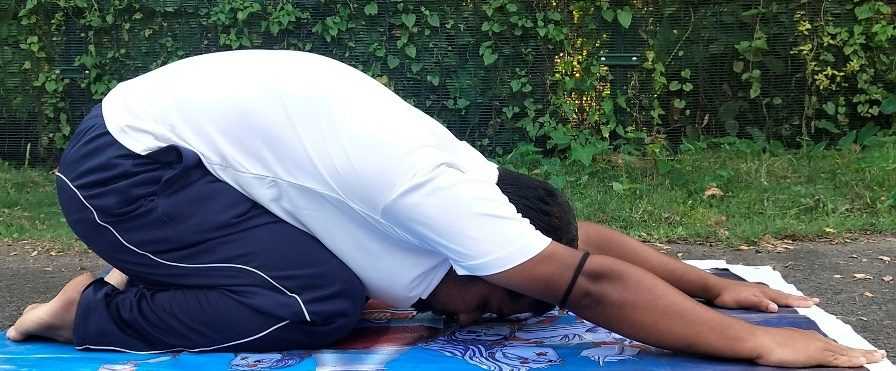
Balasana
Steps of Balasana Yoga for Beginners at Home.
Step 1.
Make a comfortable pose by kneel down on the surface or mat and touch your toes to each other. Thereafter, extent your knees. (You may use pillow for comfort).
Step 2.
Turn forward and lay your upper body between your thighs. Now, extend the sacrum and contracted the points of the hip. Relax down on the inner thighs.
Step 3.
Expanse the tailbone from the back and lift the base of your head a little away from the back.
Step 4.
Expanse your arms forward and place it front of the body. Relief the frontages of the shoulder to the surface.
Step 5.
You can hold this position for 1-2 minutes.
Contraindications or Limitations of Balasana Yoga.
- Avoid if you are suffering from diarrhea, knee injuries and high blood pressure.
Benefits of Balasana Yoga.
- Stretches ankles, quads, hips, back, shoulders, and neck.
- Relaxes the muscles of abdominal and chest.(12)
- Rejuvenate the central nervous system.(13)
- Improve breathing power.
- Increase blood flows into the brain.
- Stimulate the abdominal muscles, internal organs and digestive system.
- One of the effective Yoga Poses for beginners at home.
Repetitions.
- Recommended 3-4 repetitions.
Chakravakasana Yoga for Beginners at Home.
“Chakravakasana” which also known as “Cat Cow Pose”. Very effective for strengthen the upper body.

Chakravakasana
Steps of Chakravakasana Yoga for Beginners at Home.
Step 1.
Line up your wrists under your shoulders and the knees under your hips.
Step 2.
Straight the spine and connect the shoulders with the hips.
Step 3.
Now, look straight and take few gentle breaths.
Contraindications or Limitations of Chakravakasana Yoga.
- If you have back pain or neck injury then you must avoid this exercise.
Benefits of Chakravakasana Yoga.
- Heals lower back pain.
- Reduce stiffness in hips and spine.
- Improve breathing capacity.
- Stress relief during premenstrual syndrome.(14)
- Strengthen upper body.
- Beneficial for Osteoporosis and Osteopenia.
- Reduce depression and headache like migraine.(15)
Repetitions.
- Recommended 2-4 repetitions.
Other Yoga Poses for Beginners at Home.
Apart from the above mentioned yoga, other yoga poses for beginners at home are:
- Aerial yoga.
- Bikram yoga.
Aerial Yoga.
Aerial Yoga Equipment.
With the increase in popularity of aerial yoga and aerial fitness in general, more brands are building high quality aerial yoga equipment that can be used at home. And, most importantly, installing aerial yoga tools is very easy and extremely safe when used correctly!
When it comes to the tools you use while practicing Aerial Yoga, it is very easy. You have:
Rigging – an open beam or door-frame bar. Alternatively, a freestanding aerial frame with extended legs that you will hang from the hammock, swing or silk.
Yoga Swing Hammock – The actual fabric which you will use to perform upside down and trick.
Connectors Accessories – This is what you use to connect the swing or swing to the rig, there are a variety of connectors, carbiners, rotating connectors, static connectors and much more.
If you want to practice aerial yoga at home, you will definitely want to invest in high quality equipment as you will rely on it to support it when you are hanging from the roof!
Aerial Yoga at Home.
Here is the video of aerial yoga at home.
Bikram Yoga at Home.
Bikram Yoga is a series of 26 yoga asanas – or pose – and two pranayama breathing exercises that were popular by Bikram Chaudhary.
Steps to do Bikram Yoga at Home.
Step 1.
Get recordings of Bikram Yoga Class. Bikram Yoga follows a specific series for every single class, so once you have a recording of the class you can follow it every time you practice at home. You can buy a CD recording of bikram yoga sequence on bikram yoga website or download an MP3 or podcast recording. Alternatively, familiarize yourself with the Bikram sequence on the website or in a book and record yourself to lead the sequence.
Step 2.
Practice in a room that is small enough to warm efficiently, yet enough to practice yoga. You will need enough space to keep your mat and space so that your arms and feet can be stretched without touching anything. Bikram advises running a hot bath in the bathroom to raise humidity levels and heat space with space heaters. If you don’t have a bathroom big enough to practice, practice outside in another room in your home or if you live in a hot environment. Avoid practicing yoga in the straight sun.
Step 3.
Turn on the recording and perform the entire class. If you sweat in your hands or feet, cover your mat with a towel to prevent slipping and injuring. Drink plenty of water before, during and after the classroom to keep your body hydrated. If you are unsure about how to pose safely, consider booking a private yoga lesson at home so that you can learn from a qualified Bikram Yoga teacher.
Frequently Asked Questions.
Yoga exercises for weight loss? is it true, Yes, with several dynamic and powerful styles you can burn your calories effectively. By which you can maintain an ideal body weight and a normal range of BMI.
You must prefer restorative yoga postures which involve five to six poses. Those are includes light twists, gentle backbends and seated forward folds etc.
Though restorative yoga is not an especially physical type of yoga. It is effective for weight loss. According to a study it is found that restorative yoga is effective in weight loss among the all age groups.
Yoga is one of the simple and effective exercise and can easily be perform at home, but if you are a beginner, it is important to join an online or offline class or you may join a group of yoga team. For advance moves you must hire an instructor for your safely.
We have already covered this answer in this topic. Here several effective yoga poses are there which are most effective for the beginners and this will definitely help you to transform positively, such as;
Tadasana or Mountain Pose.
Makarasana or Crocodile Pose.
Padmasana or Lotus Pose.
Shavasana or Corpse Pose.
Siddhasana or Accomplished (perfect) Pose.
Sukhasana or Easy Pose.
Supta Padangusthasana or Reclining Big Toe Pose.
Virabhadrasana II or Warrior II.
Balasana or Child Pose.
Chakravakasana Asana or Cat Cow Pose.
All of these poses are perfect for the beginners and one can perform this without any assistance or guide.
Yes, several Yoga Poses for beginners are there which you can learn yourself at home. You can take several guides from online articles or videos. Usually joining a yoga classes is quite complicated for many people because they are very expensive.
So, it is better to learn several standing and sitting yoga poses from online or you may join a group of yoga team. But for complicated yoga asanas, you must prefer a professional trainer.
Yes, because Yoga poses strengthen your several muscles groups and increase your strength. With regular practice with right manner, you can earn lots of benefits. Apart from the physical benefits you will also achieve several mental benefits.
You must practice this Yoga Poses for beginners for at least 30 min per day at home for effective result.
The best time for practicing yoga is in the morning before having breakfast. You can do while walking, jogging or your training session or you can perform in early evening nearby sunset.
No, Yoga Poses for beginners at home are the simple and effective moves of workout. Anyone can do this without any assistance or professional trainer. However, you as a beginner should start with simple exercises.
Such simple moves have already covered in this topic. Try this moves for a positive result.
Children can start as soon as they are able to follow the orders and understand the procedure of the yoga or after a little maturity. Ideal age of children is 4 years and above. At first start with light yoga exercises.
It is always recommended to wear a T- Shirt, tops, yoga pants, sports bra and capri. Usually you must wear a flexible cloth. Tights and shorts are most effective option. If you have injury in your joint you may wear a supporter like anklet. For effective poses you must avoid slippery cloths.
As a beginner you should practice yoga for 4 days a week for half an hour for more effective result. After a period of time you may increase the time period according to your capacity. If spend more time then you will find more benefits.
Bottom Line.
While doing such yoga poses, you should not harm yourself. Therefore, you should try this postures in a regular and sensible way. If you feel any kind of discomfort in your knees or spine then you should not carry on.
However a regular practice gives you perfection in this field. So, start your journey with this simple Yoga poses for beginners at home.
+15 Sources
Freaktofit has strict sourcing guidelines and relies on peer-reviewed studies, educational research institutes, and medical organizations. We avoid using tertiary references. You can learn more about how we ensure our content is accurate and up-to-date by reading our editorial policy.
- Yoga Poses Increase Subjective Energy and State Self-Esteem in Comparison to ‘Power Poses’; https://www.ncbi.nlm.nih.gov/pmc/articles/PMC5425577/
- Clinical Effects of Yoga on Asthmatic Patients: A Preliminary Clinical Trial; https://www.ncbi.nlm.nih.gov/pmc/articles/PMC3275836/
- Effect of Yoga Therapy on Heart Rate, Blood Pressure and Cardiac Autonomic Function in Heart Failure; https://www.ncbi.nlm.nih.gov/pmc/articles/PMC3939525/
- Abdominal Pain: Symptoms & Signs; https://www.medicinenet.com/abdominal_pain/symptoms.htm
- Effects of Yogasanas in the Management of Pain during Menstruation; https://www.researchgate.net/publication/268983506_Effects_of_Yogasanas_in_the_Management_of_Pain_during_Menstruation
- Effect of Yoga on Primary Dysmenorrhea and Stress in Medical Students; http://www.iosrjournals.org/iosr-jdms/papers/Vol4-issue1/P0416973.pdf
- Changes in vigilance, self rated sleep and state anxiety in military personnel in India following yoga.; https://europepmc.org/article/PMC/6064066
- Health Impacts of Yoga and Pranayama: A State-of-the-Art Review; https://www.ncbi.nlm.nih.gov/pmc/articles/PMC3415184/
- Effects of Shambhavi Mahamudra Kriya, a Multicomponent Breath-Based Yogic Practice (Pranayama), on Perceived Stress and General Well-Being; https://journals.sagepub.com/doi/full/10.1177/2156587217730934
- SUKHASANA: SITTING UP STRAIGHT AND EXPANDING THE CHEST FORWARD; https://omstars.com/blog/yoga-anatomy/sukhasana-sitting-up-straight-and-expanding-the-chest-forward/
- Effect of fast and slow pranayama on perceived stress and cardiovascular parameters in young health-care students; https://www.researchgate.net/publication/255716295_Effect_of_fast_and_slow_pranayama_on_perceived_stress_and_cardiovascular_parameters_in_young_health-care_students
- Effects of a 12-Week Hatha Yoga Intervention on Cardiorespiratory Endurance, Muscular Strength and Endurance, and Flexibility in Hong Kong Chinese Adults: A Controlled Clinical Trial; https://www.ncbi.nlm.nih.gov/pmc/articles/PMC4475706/
- Case report: The use of medical yoga for adolescent mental health; https://www.sciencedirect.com/science/article/pii/S0965229918310896
- To compare the effects of aerobic exercise and yoga on Premenstrual syndrome; https://www.ncbi.nlm.nih.gov/pmc/articles/PMC6852652/
- Effectiveness of yoga therapy in the treatment of migraine without aura: a randomized controlled trial; https://pubmed.ncbi.nlm.nih.gov/17501846/

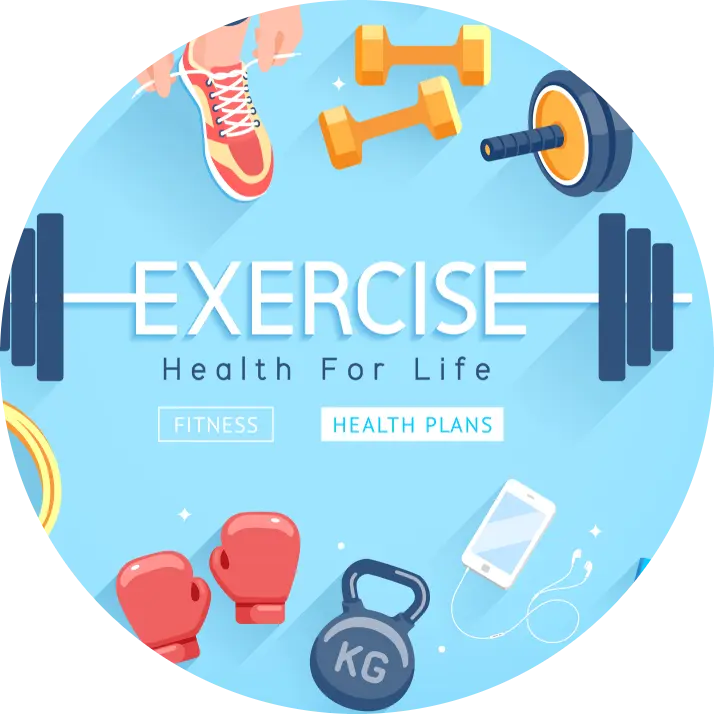 Workout
Workout
 Meditation
Meditation

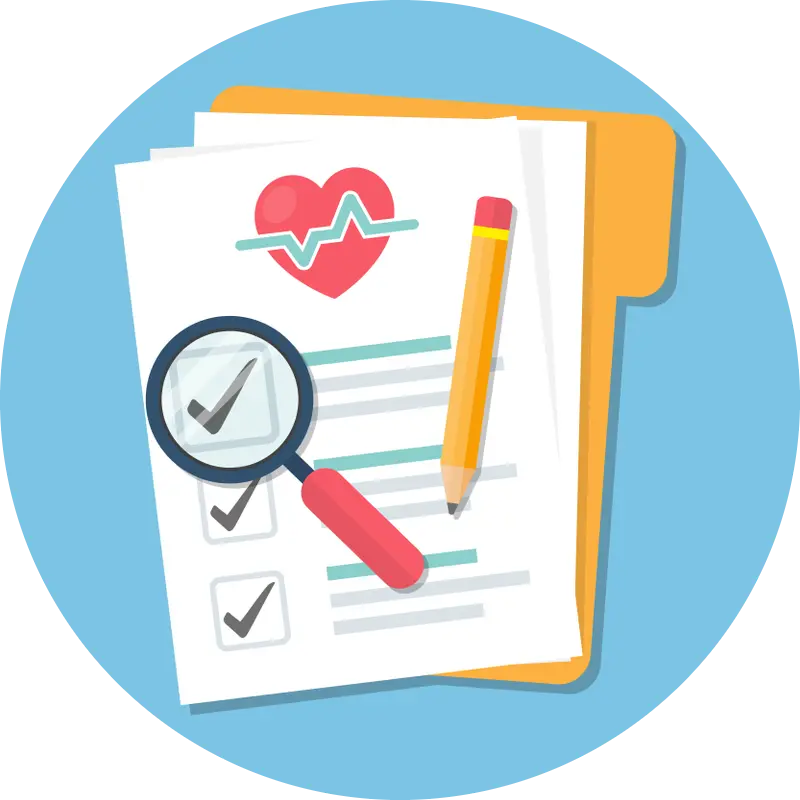
 Stories
Stories


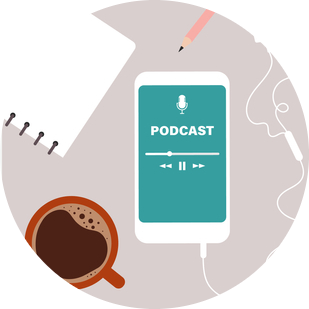 Podcast
Podcast E-book
E-book





